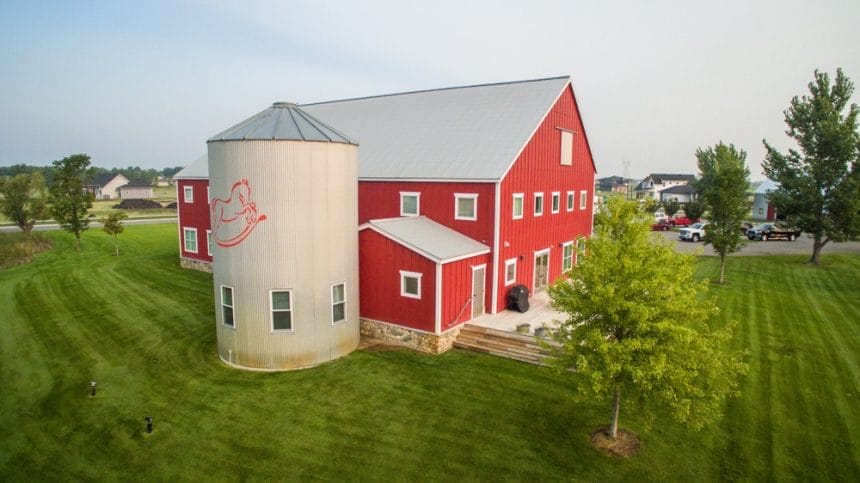While the rest of the nation’s economy has taken a hit on the chin with this year’s continued COVID-19 pandemic, it has been seemingly forgotten that America’s farmers had been nearly down for the count for the past four years. From the Red River Valley and beyond, many of North Dakota’s surrounding farms have faced increasingly uncertain futures first prompted by the beginning of the nation’s trade war with China.
With exports of soybeans and other crops decreasing by as much as 6 percent, many of North Dakota’s farmers have been forced to take the extreme measure of hoarding their crops in hopes of a rebound in prices instead of selling at a current loss.
Although North Dakota farmers had only filed three Chapter 12 farm bankruptcies from September 2018 through September 2019, bankruptcies amongst the Midwest’s farmers have increased by 13 percent compared to prior years, their highest point in the last decade.
With farmers’ debts reaching all-time highs, and there being no end in sight to the U.S.- China trade war, North Dakota’s farmers are facing a critical period in their financial distress. Depending on those farmers’ next steps, North Dakota may either witness a remarkable rebound of its agriculture industry or a downward spiral into bankruptcy oblivion.
Thankfully, North Dakota farmers have multiple options at their disposal to avert any impending financial crises and face tomorrow on steadier fiscal footing. Among others, farmers can take the following steps in an attempt to survive the current financial times:
1. Financially assess your current situation.Before taking any affirmative actions to deal with their debts, farmers should first honestly assess their current finances. Any such assessment should include the creation of accurate financial statements that can be used to evaluate the farmer’s current financial condition, including a complete list of the farmer’s liabilities and an honest budget going forward.
This information is critical in addressing any problems with the farmer’s lenders and to creating a realistic solution to address financial problems before they become bigger catastrophes. While this assessment requires some personal and honest introspection—difficult for any person—this is one of the most important first steps and prepares the farmer to choose the best possible course of action to tackle his or her financial distress. In contrast, inflating the value of assets on financial statements, guessing at the amount of crops on hand, or being overly optimistic with the numbers will create problems going forward.

2. Try negotiating with lenders and creditors. After assessing their current finances, one of the first actions a farmer should take to address their financial distress should be to continue to negotiate with his or her lenders and creditors in an attempt to avoid any need to file for bankruptcy. During these negotiations, the farmer may agree to: a modified payment plan under which he or she could make payments over time instead of on any original payment terms, to the sale of certain equipment or unused real estate to earn cash with which to pay off parts of his or her debts, or enter into a forbearance agreement under which the lender or creditor may agree to stop from collecting on debts for a short period of time while the farmer searches for new financing.
Through each of these efforts, a farmer can gain at least a short period of respite from debt collection. However, before agreeing to anything with a lender or creditor, any such agreement should be in writing, and the farmer should obtain and review all of the terms of the agreement in order to fully understand his or her rights.
3. As a last resort, file for bankruptcy.

Where all other efforts fail, a farmer can weigh the nuclear option of filing for bankruptcy. In a bankruptcy case, an automatic stay is put in place that immediately stops all collection efforts by the farmer’s lenders and creditors and any other actions affecting the property of the David Tibbals is an associate at Fredrikson who assists clients with a variety of commercial, corporate, and state and local tax law matters. He can be reached at [email protected]. bankruptcy estate (which consists of the real property and assets of the farmer).
A bankruptcy case under Chapter 11 or Chapter 12 of the Bankruptcy Code lets the farmer keep operating his or her farm while attempting to reorganize the farm’s finances and debts and avoid a liquidation or foreclosure that would end the farm’s business operations. A farmer’s reorganization will need to satisfy certain requirements, and the cost of a bankruptcy case can be expensive due to administrative costs, making bankruptcy a drastic decision and one that should normally be saved as a last resort in order to save a farming business in a Hail Mary effort.
4. When in doubt, consult with experts. Farmers should not be expected to be experts on how to deal with their financial distress. Instead, lawyers, accountants, or business professionals with expertise in negotiating troubled loans, workouts, and bankruptcy will be willing to consult and provide affordable options for providing assistance, and many do not charge for an initial consultation. At the very least, it can be critical to talk with a trusted financial adviser on how to confront problems with a lender or other creditors.
While the lingering effects of the nation’s trade war continue to cause potential problems for North Dakota’s farmers, these hard-working citizens of the state have tried-and-true options for facing those problems head on. By understanding those options, these farmers cannot only survive the current economic climate, but thrive.








